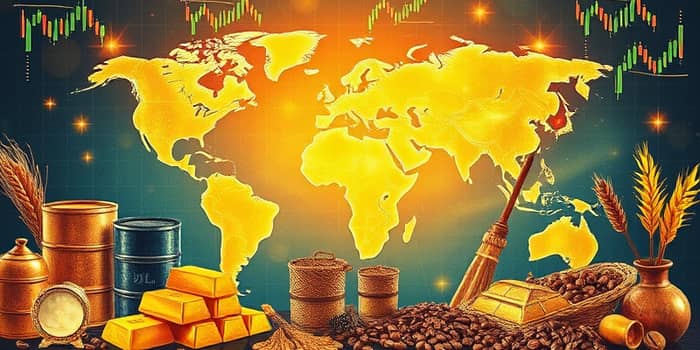
In today’s fast-paced markets, commodity trading offers both challenge and opportunity. From energy to agriculture, raw materials underpin every industry and shape global economic health. Mastering these markets demands not only knowledge, but also a strategic mindset and disciplined execution. This guide will equip you with actionable insights, proven methods, and proven risk controls to embark on your own commodity quest.
Successful traders adapt to varied market environments by selecting the right approach for each scenario. Whether prices are trending or stuck in a range, a well-chosen strategy can be the difference between profit and loss. Below are some of the most popular methods used by professionals worldwide.
Each strategy demands patience and disciplined execution. Backtesting and maintaining a trading journal can refine your entry and exit rules, improving performance over time.
Even the best-laid plans can unravel when markets turn against you. Effective risk controls protect your capital and provide peace of mind, enabling you to stay in the game for the long haul.
Regularly reviewing open positions and margin requirements allows you to manage leveraged positions carefully and adapt to emerging threats.
Beyond strategies and risk tools, a disciplined routine and deep understanding of market mechanics will set you apart.
Applying these time-tested practical tips ensures that your trading remains systematic rather than emotional.
Commodity prices hinge on three fundamental pillars: delivery location, timing, and product quality. Traders serve as the connective tissue between producers and consumers by bridging gaps in space, time, and form.
Over the past decade, oil prices surged above $100/barrel during bull runs, only to plunge below $40/barrel after 2014. Grain markets hit record highs in the early 2000s and then trended lower since 2009. Such examples illustrate sharp price swings at trend reversals, underscoring the need for vigilance.
Europe’s mineral policies and public acceptance play crucial roles in shaping new mining projects. Despite abundant potential, only a fraction of the EU’s raw material reserves has been tapped, limiting supply growth. Meanwhile, recycling and secondary materials now fulfill as much as one-third of demand in certain sectors, though technical challenges restrict broader adoption.
From 2014 to 2017, the raw materials sector saw a 13% rise in added value, largely driven by materials recovery and refining innovations. For traders, these macro developments highlight long-term themes to incorporate into strategic planning.
Venturing into commodity markets can feel daunting, but armed with the right strategies, risk controls, and market insights, you can navigate these dynamic arenas with confidence. Focus on mastering one or two segments—be it energy, metals, or agriculture—and refine your approach through backtesting and disciplined journaling.
Remember that trading is both art and science. Blend technical tools with fundamental research, maintain emotional discipline, and stay curious about global trends. As you progress, these skills will not only protect your capital but also unlock the potential for sustainable growth on your commodity quest.
References













